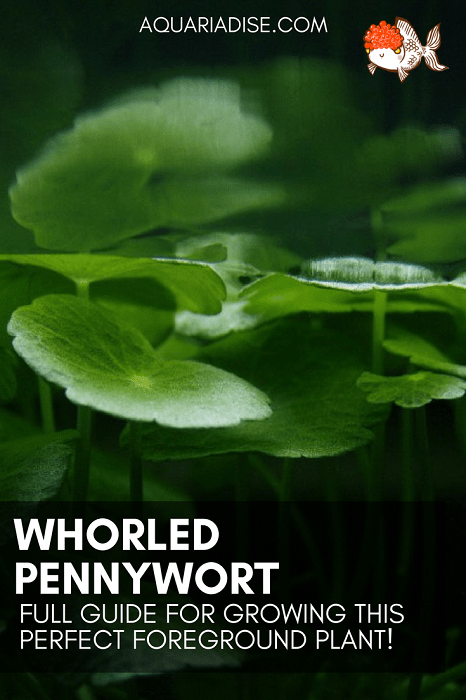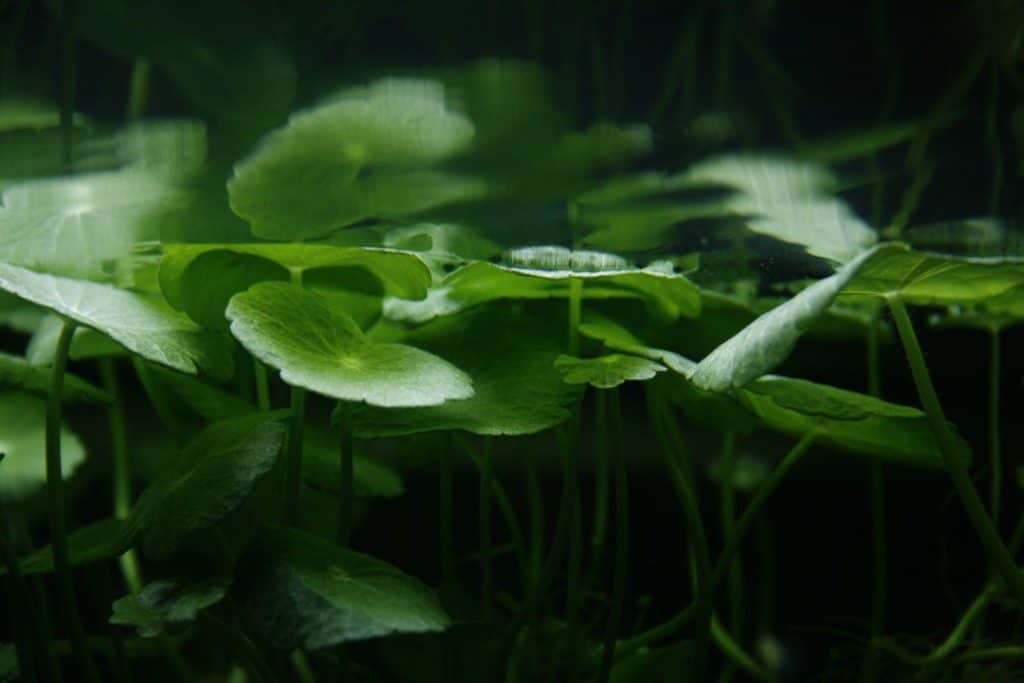Hydrocotyle verticillata is a member of the pennywort family that’s appreciated by planted aquarium lovers for its interesting shape and growth pattern. Unlike most other Hydrocotyle varieties, Hydrocotyle verticillata is a creeping plant that should stay relatively low when provided with enough light, making it almost resemble a field of clovers or mushrooms in the aquarium.
Keep reading for everything you need to know about Hydrocotyle verticillata care and growing Hydrocotyle verticillata in your own aquarium.
Planting Hydrocotyle verticillata
| Min tank size | None |
| Care | Medium |
| Location | Foreground |
| Temperature | 68-80.5 °F/20-27 °C |
| pH | 5-7 |
Due to its low growing pattern, Hydrocotyle verticillata is commonly used as a foreground plant or even as a carpet plant in larger, well-lit aquariums. It can be planted in the substrate; sand with a relatively large grain size is best, as fine sand compacts easily but the plant won’t be able to root well in very coarse gravel either.
Hydrocotyle verticillata is naturally found in marshes and shallow waters, which means it can also be grown emersed as a terrarium or paludarium plant.
Hydrocotyle verticillata care & tankmates
- Hydrocotyle verticillata will only maintain its decorative low form if plenty of light is supplied, although it can also survive with moderate lighting.
- A lot of extra Co2 or added nutrients are not a necessity if you want to grow Hydrocotyle verticillata succesfully, although this will be a rather slow growing plant without these. It’s all about balance here, because too many nutrients will result in extremely quick growth and larger leaves, which is not ideal either.
- Hydrocotyle verticillata grows by sending out runners. To propagate this plant, simply cut the connection to the other plants using a pair of sharp scissors and replant wherever you want.
- Hydrocotyle verticillata is relatively fragile and will not withstand ‘attacks’ from herbivorous or destructive fish and inverts, so be sure to choose species that will not damage the plant.

Problems with Hydrocotyle verticillata
Hydrocotyle verticillata is not the easiest plant to grow, which means problems might be encountered.
One common problem with Hydrocotyle verticillata is etiolation: a stretched growth pattern where the plant loses its attractive small shape. As discussed earlier, this is caused by a lack of light. Check whether your lighting is sufficient and, if necessary, purchase stronger lights.
Extremely fast or slow growth might be caused by a nutrient imbalance. Adjust your Co2 and the amount of added nutrients accordingly.
Buying Hydrocotyle verticillata
Hydrocotyle verticillata can be a little more difficult to find in aquarium stores than its more popular cousin Hydrocotyle leucocephala (Brazilian pennywort), though some stores should carry it. Be sure to double check whether you’re really buying Hydrocotyle verticillata, which can be recognized from the entirely round leaves and its creeping growth pattern.
You can also buy Hydrocotyle verticillata online here.

If you have any more questions about Hydrocotyle verticillata or want to share your own experiences with this decorative aquarium plant, don’t hesitate to leave a comment below!



This plant just started in a planter in my lanai that had previous plants before that I don’t even remember maybe lettuce, broccoli, etc. I was wondering if it is eatable??
Hey Vy!
We do not recommend eating anything that comes out of a fish tank that wasn’t cultivated for culinary purposes.